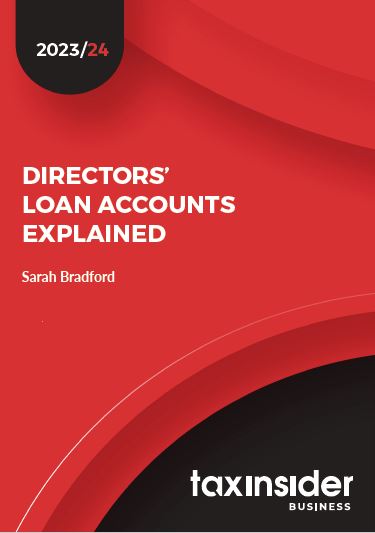
For more in depth discussion on this important area of business taxation, please see our newly released guide, Directors' Loan Accounts Explained.
----------------------------
Directors’ loan accounts (DLAs) record the cumulative movements of amounts both introduced and withdrawn to and from the company and are shrouded in anti-avoidance, so one could be forgiven for assuming that no tax benefits can come out of them.
However, with careful planning, acknowledging the corporate tax offset for interest and the current elevated interest rates, they can be used as an effective and tax-efficient way of creating an income.
Interest on DLA credit balances
DLAs may be in credit and contain significant balances, accumulated over several years from the initial capital injection to further additions for asset purchases or perhaps dividends declared which have not yet been taken.
It may or may not be customary for the company to pay interest on these advanced sums, but where the company can afford it and is profit-making, a tax-efficient opportunity arises by doing so. This is due to the combined factors of: firstly, the general tax deductibility of interest payments inside the company; and secondly, the ability for the company to pay interest on the loan at the highest (ensuring still commercial) interest rates.
Tax deductibility of interest
With the cancellation of the inflated corporation tax rate having been recently overturned by the (then) Prime Minister, the UK is now expecting a corporation tax charge of up to 25% on corporate profits in the next few months.
Any interest paid out to the directors’ loan account is eligible to an offset against the company’s profits such that a tax saving up to 25% of the amount of the interest paid will eventuate.
The rate of interest
Interest rates have been consistently rising in 2022, with seven consecutive increases at the time of writing, the sixth marking the biggest increase in 27 years. The interest paid to the director can, therefore, be high in relation to the levels of the near past.
However, care must be taken to ensure the rate is still a commercial rate and one that third-party lenders would also offer. The interest does not have to be paid out when earned, but can be accrued to be received by the director when company cash flow or personal needs dictate.
Paperwork and administration
There is a system for reporting payments to individuals liable to income tax inside a company, which puts the onus on the company to deduct basic rate tax from the payment and report and pay this amount to HMRC using a form CT61.
The forms and payment are due quarterly, and the dates are fixed by law at 31 March, 30 June, 30 September and 31 December, with the tax being due 14 days after the return period.
Taxation of director on receipt
The interest is taxable on the director as savings income at rates of 20%, 40% or 45%, depending on the other income of the director. If the director is a basic rate taxpayer, no further tax is due as it has all been paid on their behalf by the company, and the net amount will have been credited to the loan account ready for withdrawal. This compares favourably to a dividend which will be received gross and requires 8.75% tax to be paid later.
In addition, a basic-rate taxpayer has a personal savings allowance of £1,000, which may cover a substantial part of the interest taxable. Finally, compared with salary or bonuses, there are no National Insurance contributions required on interest payments received.
Practical tip
There is an additional administrative burden with paying interest through the CT61 system: calculating the tax on the interest, completing the CT61 forms and ensuring they and the income tax reach HMRC before the quarterly deadlines. The tax savings on the interest payments should be at a sufficient level to justify this additional administrative burden.



